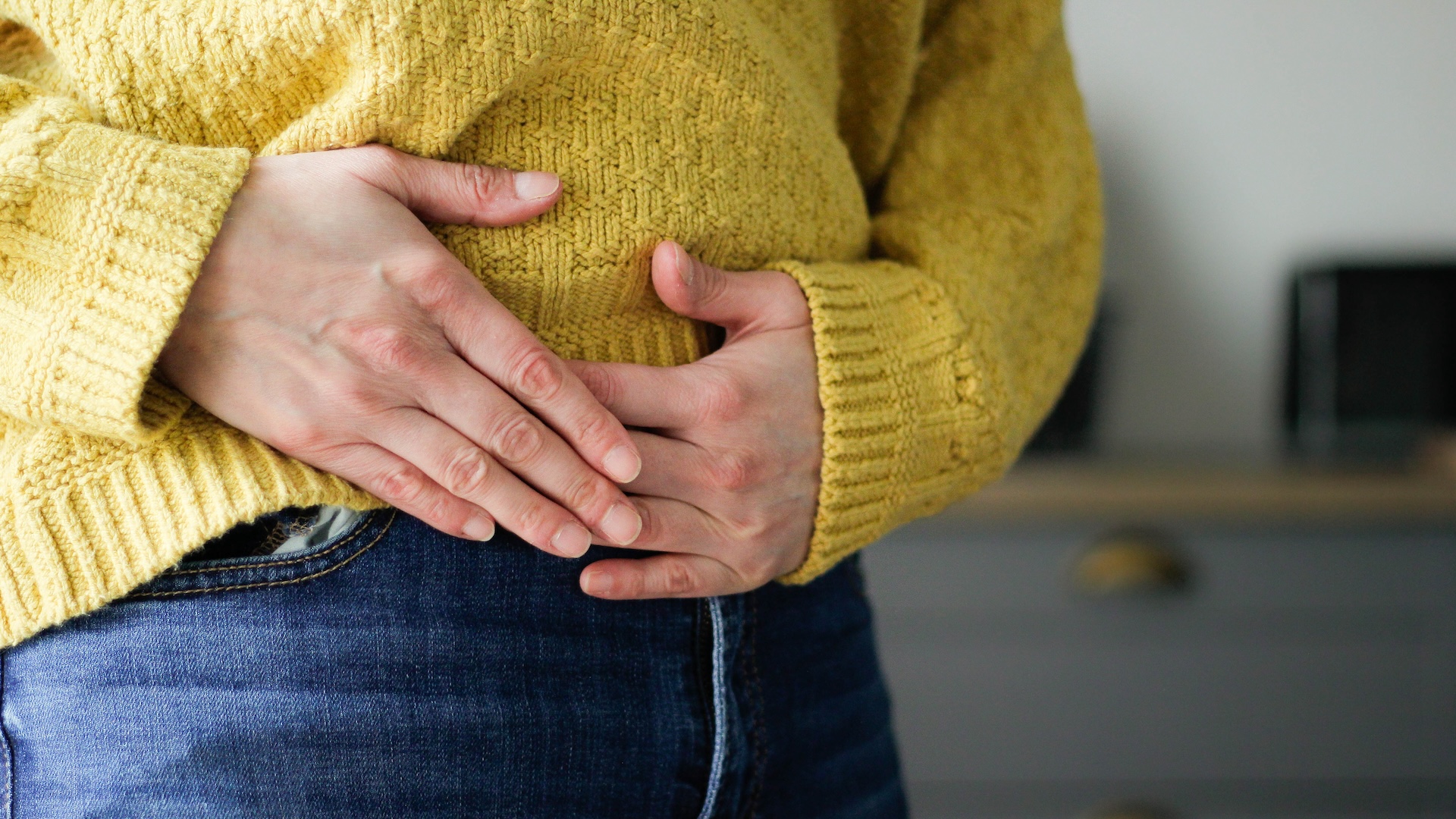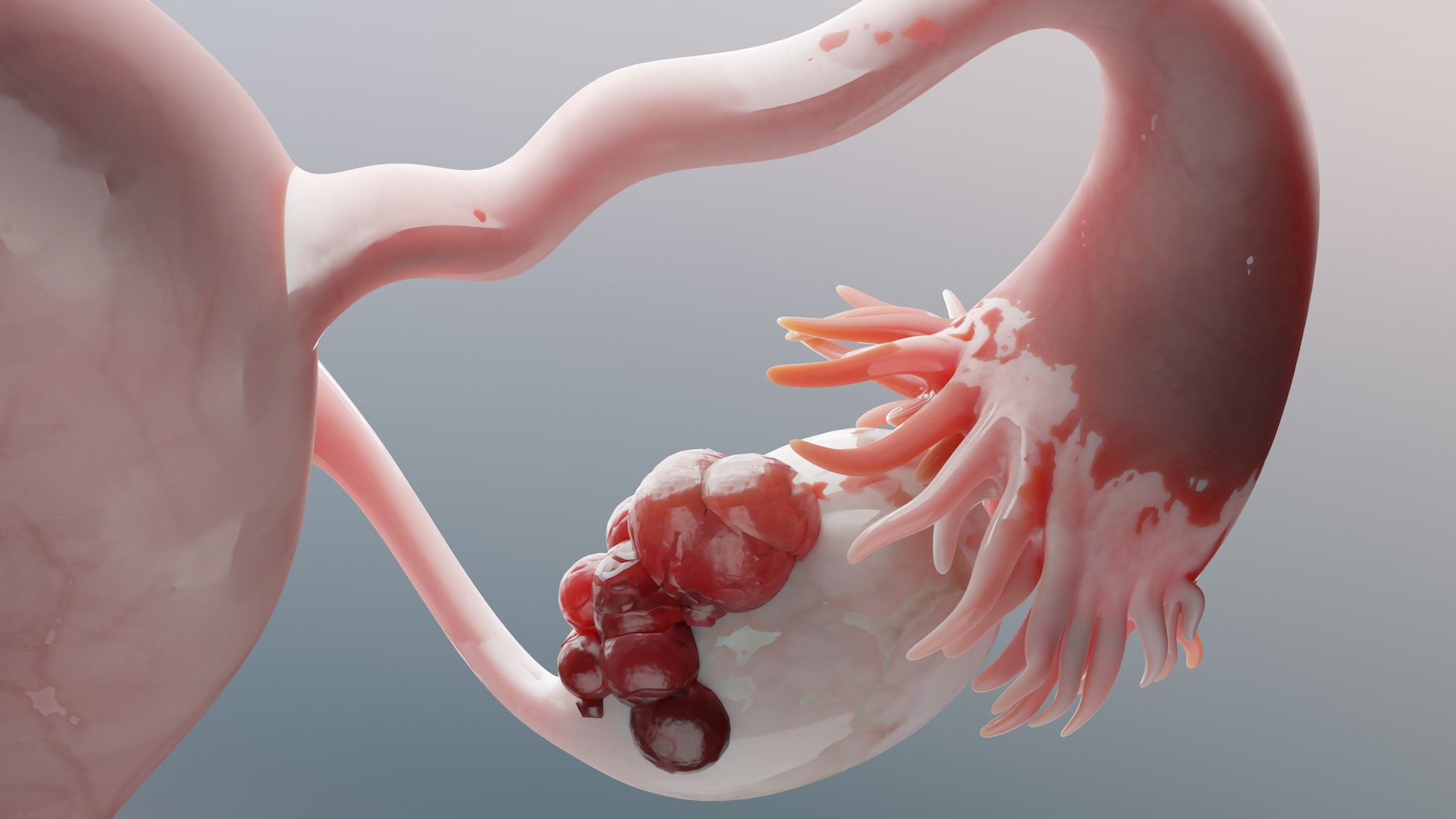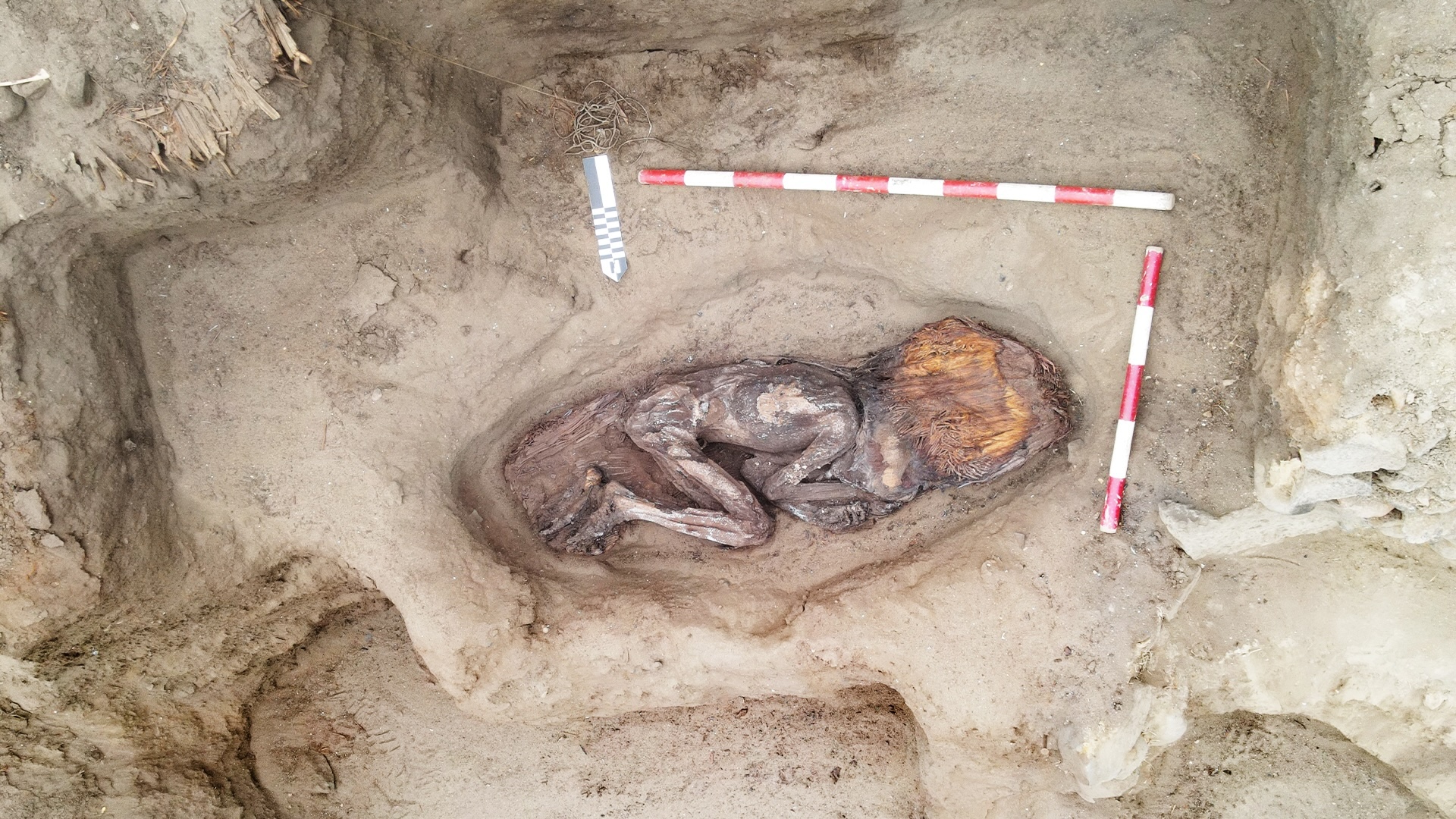What are ovarian cysts? All about cyst formation, symptoms and treatments
Ovarian cysts are fluid-filled sacs that form on or inside the ovaries for a variety of reasons. Often, they disappear on their own, but sometimes, they can grow very large, burst or cause an ovary to twist.

Ovarian cysts are very common in people who menstruate, with an estimated 10% to 30% of women — and potentially more — developing at least one in their lifetime.
These fluid-filled sacs develop in or on the ovaries, the small organs located on each side of the uterus that produce the hormones estrogen and progesterone and release eggs each month as part of the menstrual cycle.
Most ovarian cysts form as a result of the normal menstrual cycle and don't cause any issues. However, not all ovarian cysts are the same. While some are harmless and painless, others are extremely painful and can even be cancerous. The type of cyst and its associated complications determine a person's symptoms and their course of treatment.
Learn more about ovarian cysts, why they form, and when they need treatment.
Related: Why is endometriosis so hard to diagnose?
What are ovarian cysts?
"An ovarian cyst is a fluid filled sac that forms on, or within the ovary," Adam Taylor, a professor of anatomy at Lancaster University in the U.K., told Live Science in an email. "They are often large, and in many cases a similar size to the ovary itself." An ovary is about 1.2 by 0.8 by 0.4 inches (3 by 2 by 1 centimeters), Taylor said, while most ovarian cysts are often between 0.4 and 1.2 inches (1 to 3 cm) across.
Ovarian cysts can be divided into two broad types: functional and pathological. Functional ovarian cysts, also called "simple cysts," are most common, as they can form as a normal part of the menstrual cycle. They're called "functional" because they usually result from the expected function of the ovaries and are not cancerous or otherwise associated with disease. They may still cause noticeable symptoms, however, especially if they are large.
There are two kinds of functional cysts, named follicular cysts and corpus luteum cysts, based on which tissue they form within.
Compared with functional cysts, other forms of ovarian cysts are less common. These are not related to the menstrual cycle and are known as pathological cysts, or complex cysts. They typically develop due to abnormal cell growth that can be triggered by a variety of factors, including hormonal disorders, pelvic infections or conditions like endometriosis.
(In some cases, hormonal disorders can also contribute to the formation of functional ovarian cysts, as they can affect ovulation.)
Pathological cysts are mostly benign, or noncancerous. They include dermoid cysts, cystadenomas, endometriomas, and small cysts associated with the hormonal condition polycystic ovary syndrome (PCOS).
However, a small percentage of pathological cysts — less than 1% — are malignant, or cancerous. These ovarian cancer cysts are masses of cancer cells and more common after menopause.
Why do ovarian cysts form, and who's at risk of getting them?
Functional ovarian cysts are common and considered a normal part of the menstrual cycle, and because of that, "approximately 1 in every 10 women will have an ovarian cyst at some point in their life," Taylor said. "Having had one sees you more likely to have another."
Functional cysts can form from either follicles or the corpus luteum. To understand how and when these cysts form, let's first review the phases of the menstrual cycle:
Each ovary contains egg follicles — tiny sacs that contain immature eggs (oocytes). At the beginning of each menstrual cycle, several of these follicles start to mature and grow. One of the mature follicles eventually bursts open and releases an egg, during ovulation. After releasing the egg, the empty follicle becomes a temporary, hormone-secreting structure called the corpus luteum.
If the egg isn't fertilized, menstruation begins. The corpus luteum then breaks down and stops producing hormones, and estrogen and progesterone levels fall, causing the lining of the uterus to shed.
Follicular cysts occur when a mature follicle doesn't burst to release an egg and instead grows into a fluid-filled cyst. Meanwhile, corpus luteum cysts form when the corpus luteum doesn't shrink as it should at the end of the menstrual cycle but instead reseals and builds up with fluid.
These functional ovarian cysts tend to go away in a few weeks and usually cause no symptoms. These typically grow to around 1.2 inches (3 cm), although corpus luteum cysts may, on occasion, grow up to 4 inches (10.2 cm) wide.
"As these cysts form as part of the menstrual cycle they are most commonly seen in women who are between puberty and the menopause," Taylor said. "These functional cysts are typically benign and will resolve on their own."
Pathological cysts tend to be larger than functional cysts. They include ovarian dermoid cysts, also known as teratomas, which are benign tumors that often form before birth and can contain tissue, such as hair, skin, teeth or fat. Dermoid cysts form when germ cells — stem cells which are supposed to become eggs — go rogue and start developing into other tissue types instead.
They also include cystadenomas, which are cysts that develop from ovarian tissue and fill with a watery or mucous fluid. Cystadenomas can sometimes grow to about 3.9 inches (10 cm) across, on average, but some have been found to be as large as 11.8 inches (30 cm) in diameter.
Conditions like endometriosis, which occurs when tissue similar to the uterine lining grows outside the uterus, can result in the formation of cysts named endometriomas. These form when uterine-lining-like tissue grows on the ovaries. These are often named "chocolate cysts," due to the fact that they contain thick, old blood, and they can cause painful periods, pelvic pain, pain during sex, and fertility issues. Around 10% of people who menstruate have endometriosis, and an estimated 17% to 44% of people with endometriosis may develop an endometrioma.
Another condition, named polycystic ovary syndrome (PCOS), is caused by high levels of androgens (male sex hormones) and can result in the formation of several tiny cysts that measure only a few millimeters across. These form around the edge of the ovary as a result of underdeveloped follicles not maturing enough to release an egg. About 6% to 13% of reproductive-age women are estimated to have PCOS.
Importantly, though, not all people with PCOS have cysts on their ovaries, and the presence of cysts does not necessarily mean you have the condition.

What are common symptoms of ovarian cysts?
Ovarian cysts often don't cause any symptoms at all; many people have them without knowing. When symptoms do show up, they can vary in severity, depending on the type and size of the cyst, as well as whether the cyst has ruptured or is twisting an ovary.
"Each woman will present different symptoms," Taylor said. The most common symptom is pelvic pain, often caused by the ovary's blood supply being impacted or by the stretching of the peritoneum, which is a protective layer that sits above the uterus and ovaries.
Other symptoms may include bloating or a feeling of fullness, pain during sex, heavier or lighter periods, unusual vaginal bleeding, and the need to urinate more frequently. Sudden, severe pelvic pain; fever; or vomiting may mean a cyst has ruptured or twisted, which requires urgent medical attention.
Doctors use several techniques to figure out if an ovarian cyst is present, usually starting with a pelvic exam to check for swelling or tenderness in the ovary area. A pelvic exam is a physical examination of the reproductive organs of the pelvis.
Health care providers may then perform an ultrasound, which uses sound waves, to detect the size and shape of the cyst. This helps them to determine if the cyst is functional or pathological, and whether the cyst is fluid-filled, solid or "mixed." Doctors may also do a blood test to check for markers of ovarian cancer, as well as to measure hormone levels.
What causes cysts to rupture, and is it dangerous?
Sometimes ovarian cysts may rupture, meaning they tear open and spill their contents into the pelvic cavity. This can happen if a cyst is particularly large or as a result of physical activity, such as sex or exercise, that somehow pops the cyst.
"There are many physical things that can cause an increase in pelvic or abdominal pressure, which can also cause cysts to rupture — exercise, lifting, sex or physical trauma," Taylor said. Underlying conditions that affect the ovaries, such as polycystic ovary syndrome, can increase the risk of cyst rupture, he added.
A rupture may not result in any symptoms and may resolve on its own, or if it does cause discomfort, it can be managed with over-the-counter pain medications. However, a cyst rupture can also be very painful and cause various symptoms, including bloating, vaginal bleeding, nausea or vomiting. If a ruptured cyst is bleeding significantly, this can cause dizziness or fainting and would require prompt medical intervention.
"Where a ruptured cyst is in proximity to a blood vessel, it may cause significant bleeding, which can be life-threatening and may necessitate surgery," Taylor said. "Where pelvic pain is at a level that is prolonged or uncomfortable it should be checked out to ensure that there is nothing life-threatening happening in or around the ovary."
If an ovarian cyst is particularly large or heavy, it can result in ovarian torsion, in which the ovary rotates around its own ligaments, thus cutting off its blood supply. This can result in extreme pain, nausea and vomiting, and surgery is required to prevent the ovary from dying and prevent further complications, such as abdominal infections.
What are the treatments for ovarian cysts?
Treatment for ovarian cysts depends on many factors, including the type of cyst, its size, and any symptoms it may be causing.
Small functional cysts often disappear on their own and don't require any medical treatment. That said, they can be regularly monitored to make sure they aren't growing.
Sign up for the Live Science daily newsletter now
Get the world’s most fascinating discoveries delivered straight to your inbox.
Any minor pain associated with cysts can be treated with painkillers, like ibuprofen. However, if these symptoms don't go away or if the cyst is growing, much larger than usual, causing severe pain, or suspected to be cancerous, it may be surgically removed.
"The type and extent of surgery depends on what structures are being impacted as sometimes these cysts can affect the urinary and gastrointestinal systems," Taylor said.
Laparoscopy, also known as keyhole surgery, is generally performed if the cyst is small and benign, while laparotomy, or open surgery, may be required to remove larger cysts. The latter procedure may also be used if the cyst is suspected to be cancerous.
In rare cases, if the cyst is found to be cancerous, one or both ovaries also be removed.
Disclaimer
This article is for informational purposes only and is not meant to offer medical advice.

Jess Thomson is a freelance journalist. She previously worked as a science reporter for Newsweek, and has also written for publications including VICE, The Guardian, The Cut, and Inverse. Jess holds a Biological Sciences degree from the University of Oxford, where she specialised in animal behavior and ecology.
You must confirm your public display name before commenting
Please logout and then login again, you will then be prompted to enter your display name.
Is getting an IUD painful?
'Useless' female organ discovered over a century ago may actually support ovaries, study finds









